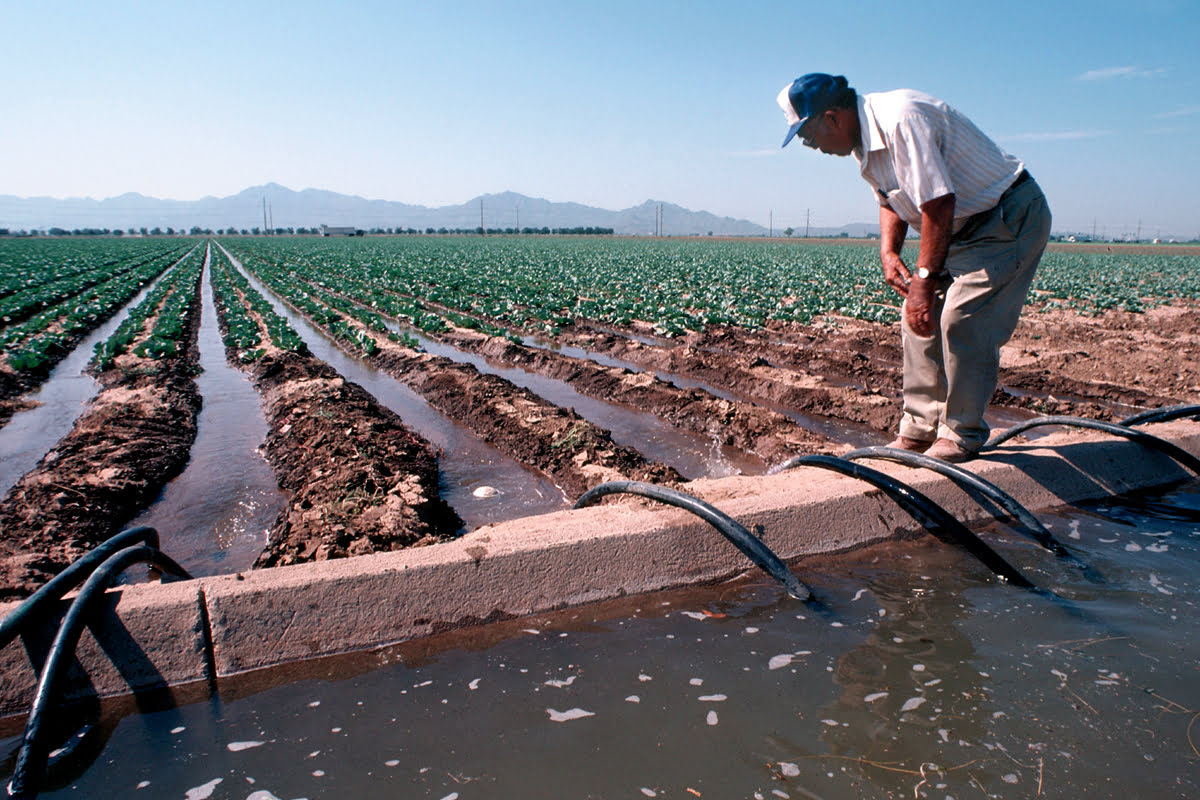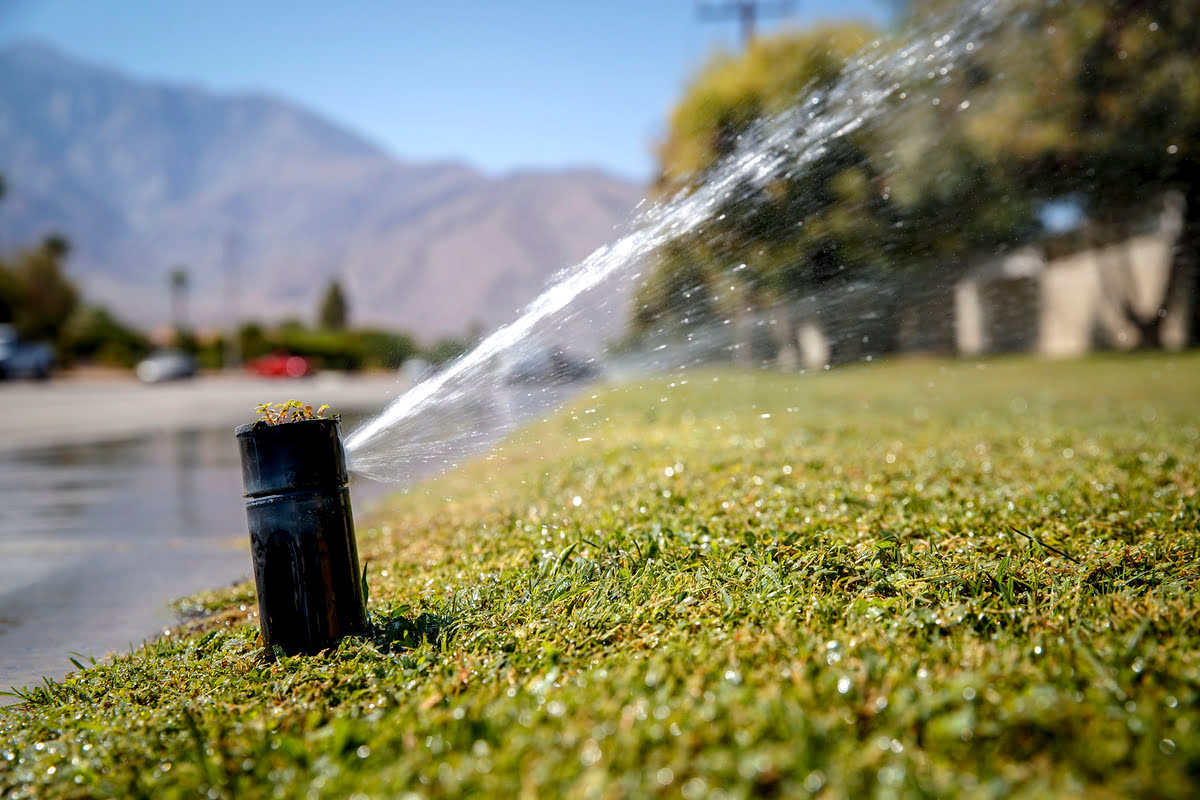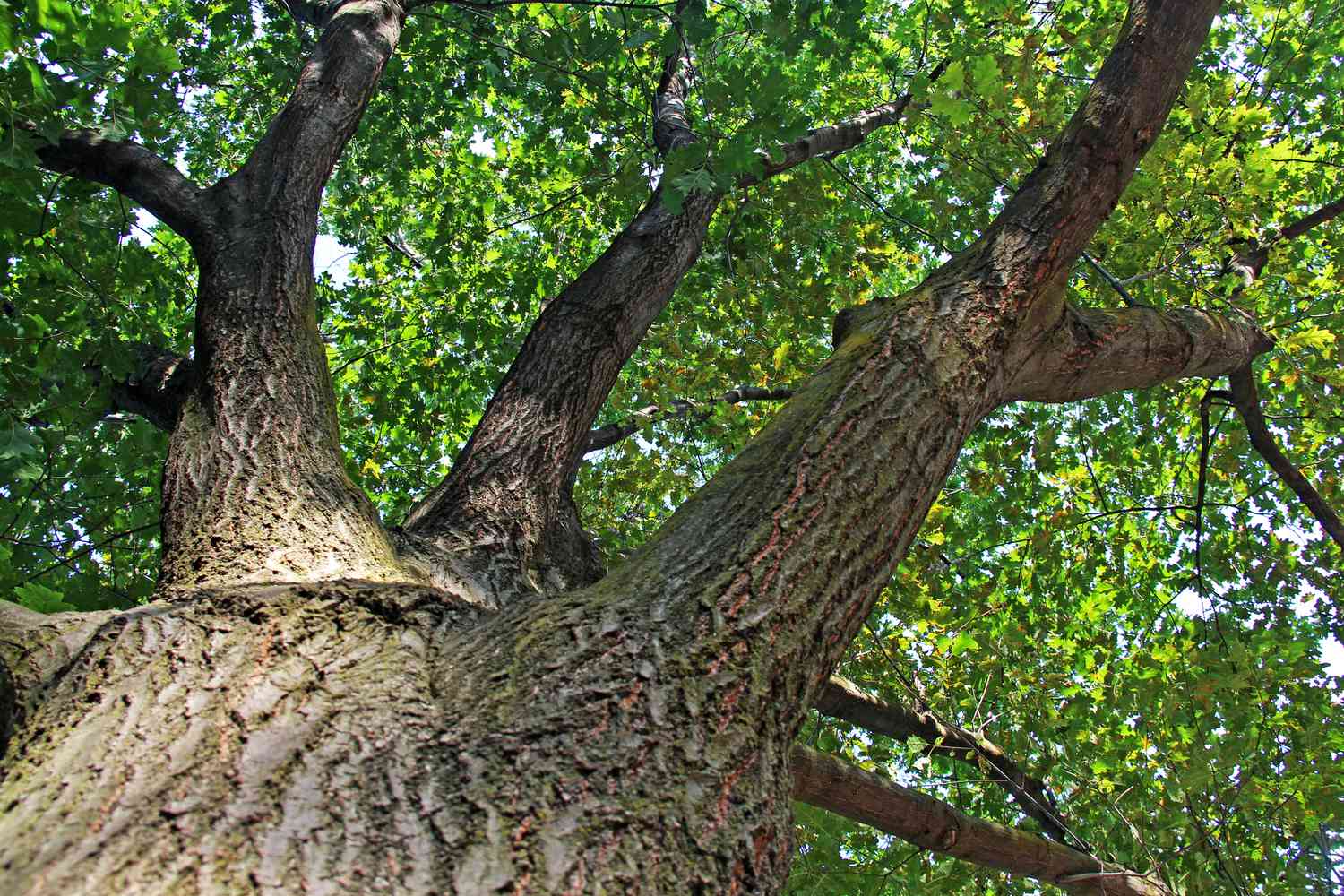Home>Gardening News and Trends>Latest News>Where Does Most Of The Water Used For Irrigation Come From?


Latest News
Where Does Most Of The Water Used For Irrigation Come From?
Published: November 20, 2023
Discover the latest news on the sources of water used for irrigation. Find out where most of the water comes from and stay informed about the latest developments in irrigation methods.
(Many of the links in this article redirect to a specific reviewed product. Your purchase of these products through affiliate links helps to generate commission for Chicagolandgardening.com, at no extra cost. Learn more)
Table of Contents
Introduction
When it comes to the vital resource of water, it plays a crucial role in sustaining agriculture and ensuring food security. Irrigation, the process of supplying water to crops, is essential for the growth and yield of plants in areas where rainfall is insufficient. However, a pertinent question arises: where does most of the water used for irrigation come from?
Irrigation water sources can vary depending on geographical location, climate conditions, and local water availability. In general, there are several primary sources of water for irrigation, including surface water, groundwater, rainwater harvesting, treated wastewater, and desalination.
In this article, we will explore each of these sources in detail, shedding light on their significance and contributions to irrigation practices. By understanding the various sources of water for irrigation, we can gain insight into the diverse strategies used to ensure agricultural productivity and sustainability.
It’s important to note that the availability and utilization of these water sources can vary from region to region. Local factors such as climate patterns, regulations, infrastructure, and social considerations can influence the choice of water sources for irrigation in different parts of the world.
Now, let’s delve into the different sources of water for irrigation to better understand the complexities and significance of this vital resource.
Surface Water Sources for Irrigation
Surface water refers to the water found in rivers, lakes, reservoirs, and canals. This source of water for irrigation is widely used in many regions, especially where abundant water bodies exist. Surface water has several advantages, including its accessibility and relatively low cost compared to other sources.
Irrigation systems that rely on surface water often involve diversion structures such as dams or barrages, which impound water in reservoirs. From these reservoirs, water can be released and distributed through canals to irrigate nearby agricultural fields.
Surface water sources provide several benefits to farmers and agricultural communities. They offer a consistent and reliable supply of water, ensuring that crops receive adequate moisture for growth. Surface water can also support natural ecosystems and wildlife habitats.
However, the availability of surface water for irrigation can be influenced by factors such as rainfall patterns, seasonal variations, and upstream water usage. In regions experiencing water scarcity or frequent droughts, surface water sources may not be sufficient to meet irrigation needs.
Efficient management and conservation practices are essential for the sustainable use of surface water for irrigation. This includes careful monitoring of water levels, implementation of water-saving techniques such as drip irrigation, and the promotion of responsible water use among farmers.
In some cases, challenges such as water pollution and sedimentation can affect the quality of surface water, impacting both human health and agricultural productivity. It is crucial to implement water treatment and purification measures to ensure the suitability of surface water for irrigation purposes.
Overall, surface water sources play a significant role in irrigation, serving as a reliable and accessible water supply for agricultural activities. However, it is essential to manage and protect these resources to ensure their long-term availability and sustainability.
Groundwater Sources for Irrigation
Groundwater, also known as subsurface water, is another important source of water for irrigation. It refers to the water stored in underground aquifers, which can be accessed through wells and pumping systems. Groundwater irrigation is prevalent in many regions worldwide, especially in areas where surface water resources may be limited or unreliable.
The use of groundwater for irrigation offers several advantages. It provides a consistent and stable supply of water throughout the year, regardless of seasonal variations or rainfall patterns. This reliability makes it particularly valuable in arid and semi-arid regions where surface water sources may be scarce.
One of the key benefits of groundwater is that it can be managed and controlled locally, allowing farmers to have a more direct influence over their water supply. This autonomy enables efficient water allocation and allows farmers to tailor irrigation practices to meet the specific needs of their crops.
However, the use of groundwater for irrigation is not without challenges. Over-extraction of groundwater can lead to depletion of aquifers, causing long-term environmental and socio-economic impacts. It is crucial to implement sustainable groundwater management practices to ensure the long-term availability of this resource.
Monitoring and regulating groundwater usage, implementing efficient irrigation techniques such as drip irrigation, and promoting water conservation practices can help mitigate the risks associated with over-exploitation of groundwater resources.
Furthermore, quality issues may arise with groundwater sources, such as high salinity or contamination from pollutants. Water treatment and purification technologies may be necessary to ensure the suitability of groundwater for irrigation purposes.
Overall, groundwater is a valuable and reliable source of water for irrigation, particularly in regions where surface water may be limited. Proper management and sustainable utilization are essential to safeguard this critical resource and ensure its long-term availability for agricultural activities.
Rainwater Harvesting for Irrigation
Rainwater harvesting is a traditional and effective method of collecting and storing rainwater for various uses, including irrigation. It involves capturing rainfall from rooftops, land surfaces, or other catchment areas, and storing it for future irrigation needs.
One of the main advantages of rainwater harvesting for irrigation is its sustainability. Rainwater is a renewable resource, and its availability is directly dependent on rainfall patterns. By collecting and utilizing rainwater, farmers can reduce their reliance on other water sources and promote self-sufficiency.
Rainwater harvesting systems can range from simple, low-cost setups, such as rain barrels, to more advanced systems that involve the collection of large volumes of water in tanks or reservoirs. These systems can be designed to capture and retain rainwater for extended periods, ensuring a continuous supply during dry spells or when other water sources are limited.
In addition to its environmental benefits, rainwater harvesting can also help reduce water costs for farmers, particularly in areas where water prices are high or access to conventional water sources is limited.
However, the effectiveness and viability of rainwater harvesting for irrigation depend on factors such as rainfall patterns, catchment area size, and storage capacity. In regions with irregular or low rainfall, supplementary water sources may still be required to meet irrigation demands.
Proper maintenance and management of rainwater harvesting systems are essential to ensure their efficiency and longevity. Regular cleaning of catchment surfaces, proper filtration to remove debris, and adequate storage tank maintenance are key aspects to consider.
Furthermore, rainwater quality can be impacted by external factors, such as air pollution or contaminants from catchment surfaces. Implementing water treatment techniques, such as filtration or disinfection, may be necessary to improve the quality of harvested rainwater for irrigation purposes.
Rainwater harvesting for irrigation not only conserves water but also promotes sustainable agriculture and contributes to the overall resilience of farming communities. It can be an effective strategy to mitigate the impacts of water scarcity and adapt to changing climate conditions.
Use of Treated Wastewater for Irrigation
The reuse of treated wastewater for irrigation has gained significant attention in recent years as a sustainable solution to water scarcity and increasing wastewater volumes. Treated wastewater, also known as reclaimed water, can be a valuable and reliable source of irrigation water with proper treatment and management.
Wastewater from domestic, industrial, and agricultural activities can be treated to remove contaminants and pathogens, making it suitable for non-potable purposes such as irrigation. This practice not only helps conserve freshwater resources but also reduces the discharge of wastewater into natural water bodies, thereby minimizing pollution.
The use of treated wastewater for irrigation offers several benefits. It provides a consistent and reliable water supply, particularly in regions where conventional water sources may be limited or overburdened. It also reduces the demand for freshwater, allowing it to be dedicated to other essential uses.
Furthermore, treated wastewater can contain beneficial nutrients and organic matter, which can enhance soil fertility and improve crop growth. This nutrient-rich water can reduce the need for additional fertilizers, leading to cost savings for farmers and reducing environmental impacts associated with excessive fertilizer use.
However, there are potential challenges and considerations associated with the use of treated wastewater for irrigation. The treatment process should effectively remove contaminants, pathogens, and excess salts to ensure the safety of both crops and consumers. Monitoring water quality and compliance with established regulations are crucial to maintain health and environmental standards.
Public perception and acceptance of using treated wastewater for irrigation can also present challenges. Appropriate communication and education programs are important to address concerns and increase awareness about the safety and benefits of reclaimed water use in agriculture.
Efficient irrigation practices, such as drip irrigation or sprinkler systems, must be implemented to maximize water use efficiency and minimize potential health risks associated with direct contact between humans and treated wastewater.
Overall, the use of treated wastewater for irrigation can be a sustainable solution to water scarcity. By adopting appropriate treatment technologies and management practices, we can harness the potential of wastewater as a reliable and alternative water source for irrigation, contributing to both water conservation and agricultural sustainability.
Desalination for Irrigation
Desalination, the process of removing salt and other impurities from seawater or brackish water, is an increasingly popular method for obtaining freshwater for irrigation purposes. This technology allows regions with limited freshwater resources but abundant access to saltwater bodies, such as oceans, to utilize this alternative water source for irrigation.
Desalination can be achieved through various methods, including reverse osmosis, distillation, and electrodialysis. These processes effectively remove salts and other contaminants, producing freshwater that is suitable for irrigation.
The use of desalinated water for irrigation offers several advantages. Firstly, it provides a consistent and reliable water supply that is not dependent on natural rainfall patterns or surface water availability. This is particularly important in arid and coastal regions where conventional water sources may be scarce.
Desalination allows farmers to have greater control and independence over their water supply, overcoming the limitations of relying on other sources. It also reduces the pressure on freshwater resources, allowing them to be allocated to other essential uses or preserved for ecological purposes.
However, there are considerations and challenges associated with desalination for irrigation. The process of desalination can be energy-intensive and expensive, which can impact the overall cost of water and the feasibility of large-scale implementation.
The disposal of brine, a byproduct of desalination, can also present environmental challenges. Proper management and disposal of brine are essential to minimize impacts on marine ecosystems.
Furthermore, desalinated water may have a different mineral composition compared to freshwater sources, which can affect soil fertility and crop growth. Adequate soil and water management practices should be employed to address any potential imbalances and ensure optimal agricultural productivity.
Desalination technology continues to improve in terms of efficiency, cost-effectiveness, and environmental impacts. Research and innovation in this field are essential to make desalination a viable and sustainable solution for meeting irrigation water demands.
By leveraging desalination, regions can expand their water resources and overcome the challenges posed by water scarcity, contributing to the development of resilient agricultural systems.
Conclusion
Ensuring a sustainable and reliable water supply for irrigation is crucial for agricultural productivity and food security. Understanding the different sources of water for irrigation allows us to explore diverse strategies and technologies to meet the growing demands of agriculture.
Surface water, such as rivers and reservoirs, provides a readily accessible source of irrigation water, but its availability can be influenced by factors like climate and upstream water usage. Groundwater, on the other hand, offers a reliable and controllable water supply, but proper management is vital to prevent over-extraction and depletion of aquifers.
Rainwater harvesting is a sustainable approach to collect and store rainwater for irrigation, promoting self-sufficiency and reducing reliance on other water sources. Treated wastewater and desalination technologies offer alternative sources of water, providing a consistent supply in regions with limited freshwater resources.
Each source of water for irrigation has its benefits and challenges. Effective water management practices, such as efficient irrigation techniques and water conservation measures, are essential regardless of the water source used. It is also crucial to consider the quality and safety of water, ensuring it meets the required standards for irrigation purposes.
By integrating multiple water sources and implementing sustainable water management practices, farmers can optimize water usage, minimize environmental impacts, and adapt to changing climate conditions. Collaboration between government bodies, agricultural communities, and water management organizations is vital to establish effective policies and infrastructure for sustainable irrigation.
In conclusion, the availability and utilization of water for irrigation vary depending on local conditions and resources. By exploring and maximizing the potential of different water sources, we can ensure the long-term availability and sustainability of water for irrigation, contributing to the resilience and productivity of agriculture worldwide.









